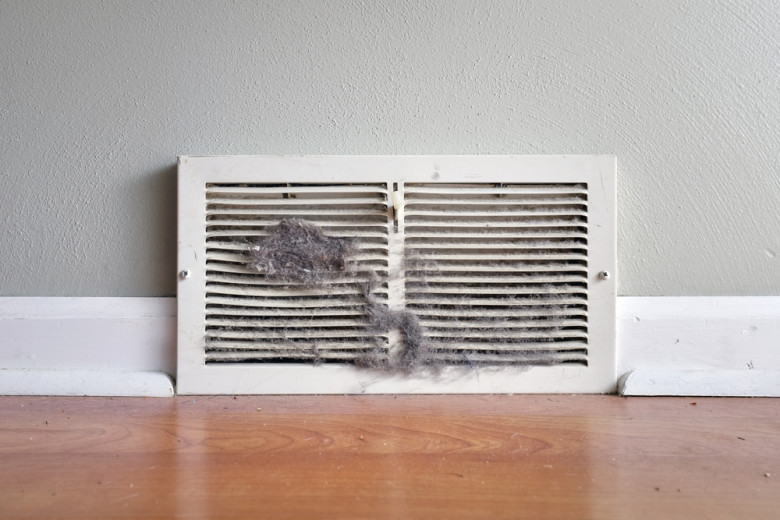How can homeowners take simple and cost-effective steps to significantly improve indoor air quality for better health and comfort? Indoor air quality often goes unnoticed, yet it plays a vital role in our overall well-being. By implementing straightforward measures, homeowners can enhance the air they breathe, leading to long-term health benefits and a more comfortable living environment.
Identifying Common Indoor Pollutants
Indoor air pollutants come from various sources and can significantly impact health. Common pollutants include dust, pet dander, and volatile organic compounds (VOCs). Dust accumulates from everyday activities and can harbor allergens and microorganisms. Pet dander, consisting of tiny skin flakes from animals, can trigger allergic reactions and asthma. VOCs, emitted from household products like paints, cleaners, and furniture, can cause headaches, dizziness, and long-term health issues.

Understanding the sources and impacts of these pollutants is the first step in improving indoor air quality. By addressing these common contaminants, homeowners can create a healthier living environment.
Ventilation: The Key to Fresh Air
Proper ventilation is crucial for maintaining indoor air quality. It helps remove pollutants and brings in fresh air, reducing the concentration of harmful substances. Without adequate ventilation, indoor air can become stale and filled with contaminants, leading to health issues such as headaches, fatigue, and respiratory problems.
To improve ventilation, homeowners can use several methods. Exhaust fans in kitchens and bathrooms are effective in expelling moisture and odors. These fans should be used regularly, especially during and after activities that generate steam or strong smells. Opening windows is another simple yet effective way to enhance airflow. Even a few minutes of open windows each day can significantly improve air quality by allowing fresh air to circulate.
Additionally, installing air vents and ensuring they are not blocked can help maintain a steady flow of air throughout the home. For homes with HVAC systems, regular maintenance and filter replacement are essential to ensure the system operates efficiently and provides adequate ventilation.
Effective Use of Air Purifiers
Air purifiers play a significant role in removing harmful particles from the air and improve indoor air quality. They are designed to capture pollutants such as dust, pollen, pet dander, and even some bacteria and viruses. By filtering these contaminants, air purifiers can help reduce allergy symptoms, improve respiratory health, and create a cleaner living environment.
There are several types of air purifiers, each with its own strengths. HEPA (High-Efficiency Particulate Air) purifiers are highly effective at trapping small particles, making them ideal for homes with allergy sufferers. Activated carbon purifiers excel at removing odors and VOCs, making them suitable for areas with strong smells or chemical emissions. UV-C light purifiers use ultraviolet light to kill bacteria and viruses, providing an added layer of protection against airborne pathogens.
Choosing the right air purifier depends on the specific needs of the household. For general use, a combination of HEPA and activated carbon filters can address a wide range of pollutants. In settings where bacteria and viruses are a concern, UV-C light purifiers can offer additional peace of mind.
Houseplants: Nature's Air Filters
Houseplants offer a natural way to improve indoor air quality by filtering toxins and releasing oxygen. They can absorb harmful substances such as formaldehyde, benzene, and trichloroethylene, which are commonly found in household products and furnishings. By incorporating specific plant species into your home, you can enhance air quality while adding aesthetic value.
Several houseplants are particularly effective at purifying air. Spider plants are known for their ability to remove formaldehyde and xylene. They are low-maintenance and thrive in indirect sunlight, making them ideal for various indoor settings. Peace lilies can filter out benzene, formaldehyde, and trichloroethylene. They also help maintain humidity levels, which can be beneficial for respiratory health.
Aloe vera is another excellent choice, known for its ability to remove formaldehyde and benzene. In addition to its air-purifying qualities, aloe vera has medicinal properties, making it a versatile addition to any home. Snake plants are effective at filtering out formaldehyde, xylene, and toluene. They are also hardy and can tolerate low light conditions, making them suitable for less sunny areas of the house.
By selecting and caring for these houseplants, homeowners can naturally improve their indoor air quality. These plants not only filter out toxins but also contribute to a healthier and more pleasant living environment.
Regular Maintenance for Lasting Benefits
Regular HVAC maintenance and filter replacement are essential for sustaining indoor air quality improvements. Neglecting these tasks can lead to the accumulation of dust, allergens, and other pollutants within the system, reducing its efficiency and effectiveness. Consistent maintenance ensures that the HVAC system operates smoothly, providing clean and healthy air throughout the home.

Creating a maintenance schedule can simplify these tasks. Homeowners can set reminders for filter replacements and professional inspections, ensuring they are not overlooked. Keeping a log of maintenance activities can also be helpful, providing a record of when tasks were completed and any issues that were addressed.
Creating an Action Plan for Healthier Air
Improving indoor air quality involves several simple and cost-effective steps. By implementing these measures, homeowners can enjoy long-term health benefits and a more comfortable living environment. For expert assistance in maintaining and improving your HVAC system, ensuring it supports the best possible indoor air quality, visit Moore's Air Conditioning & Heating. Let our professionals help you breathe easier.